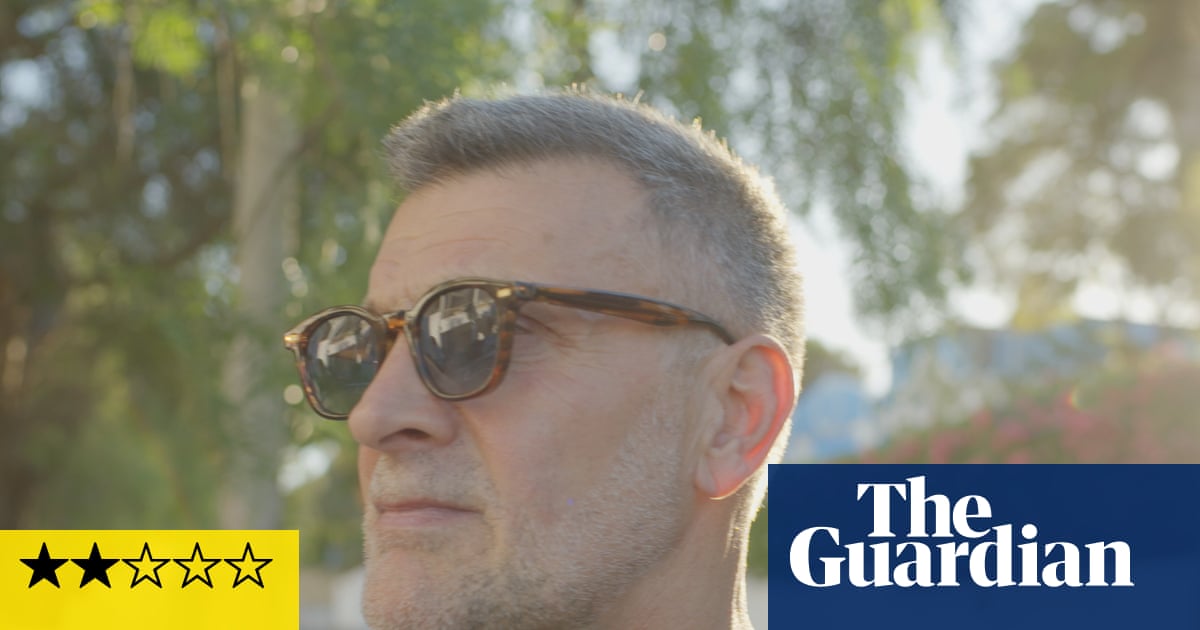It is a warehouse the size of 12 football pitches that promises to create much-needed jobs and development in Caucaia city, north-east Brazil. But it won’t have shelves stocked with products. This vast building will be a datacentre, believed to be earmarked for TikTok, the Chinese-owned video-sharing app, as part of a 55bn reais (£7.3bn) project to expand its global datacentre infrastructure.
As the demand for supercomputer facilities rises, fuelled by the AI boom, Brazil is attracting more and more tech companies. The choice of Caucaia is no accident. Several undersea cables carry data from the nearby capital of Ceará state, Fortaleza, to other continents. The closer to the cables, the greater the traffic capacity and the lower the latency, or response time, between two points on the internet network.
Caucaia also has Pecém EPZ, a zone in which companies can produce goods and services for export with a range of tax benefits and simplified bureaucratic procedures.
Yet Caucaia also suffers from extreme weather events, including droughts and heavy rains, according to data from the Digital Atlas of Disasters in Brazil and the Integrated Disaster Information System.
In 16 of the 21 years between 2003 and 2024, a state of emergency due to drought was declared in the city at least once. In 2019, almost 10,000 people were affected by water shortages, the Digital Atlas of Disasters shows. As reservoirs were depleted, the water became unfit for consumption, leading to crop losses and difficulty accessing basic food for the population.
Datacentres use vast amounts of energy and water to cool their supercomputers. Nevertheless, public authorities are greenlighting their construction in cities that have persistently suffered from drought. Caucaia is not an isolated case.
According to the Digital Disaster Atlas, five of the 22 datacentres planned are located in cities that have suffered recurring droughts and water shortages since 2003.
So far, the Chinese social network has not been named in the permit applications in Caucaia. But in February, the state government’s chief of staff, Chagas Vieira, confirmed in an interview with a local radio station that it was in talks with a Chinese company, and representatives from TikTok and its parent company, ByteDance, have met senior government officials, including the vice-president and the development, industry, trade and services minister Geraldo Alckmin.
ByteDance has been approached for comment.
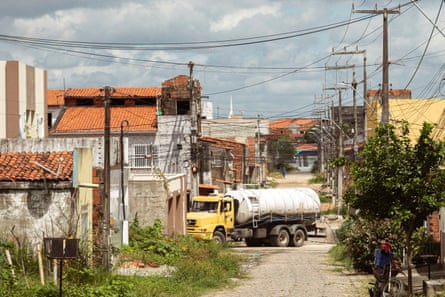
The company officially responsible for the project is Casa dos Ventos, a Brazilian wind energy provider that has invested in the datacentre sector. The company’s founder and president, Mario Araripe, announced last year that he aimed to attract a large global tech company, such as Apple, Amazon, Google, Meta or Microsoft, to fill the place with its computers.
Casa dos Ventos has already obtained one of the three necessary licences needed from the state of Ceará. According to the State Environmental Superintendence (Semace), the project received a licence for “water consumption of 30m³/day in a closed circuit, supplied by an artesian well”. Access to further details has been refused due to commercial confidentiality.
Casa dos Ventos says it is “committed to transforming Porto do Pecém into a technology innovation and energy transition complex” with “the largest datacentre and green hydrogen project in the country, which will use renewable energy”.
Projects that require substantial power, such as datacentres, must apply for special permission from the Brazilian government to operate. In 2024, at least seven of the 21 authorisations published by the ministry of mines and energy were related to datacentres.
Casa dos Ventos is also responsible for another project for a datacentre under state review in Campo Redondo, Rio Grande do Norte, which has experienced drought for 14 of the last 21 years, analysis of data from the Digital Disaster Atlas shows. During a water shortage in 2022, the municipality requested federal support and water trucks were dispatched to meet demand.
A similar situation has occurred in Igaporã, Bahia, where a Brazilian renewables energy company, plans to build two datacentres. The city has declared a state of emergency due to drought and dry spells in 12 of the 22 years since 2003. In 2021, about 5,500 people were affected by water shortages in rural areas.
There is no transparency on water consumption by datacentres under construction in these cities. Companies do not publish this information voluntarily, and the government refuses to release technical documentation for licensing, citing industrial secrecy.
In early April, the National Electricity System Operator (ONS) rejected Casa dos Ventos’s request for access to the grid, citing risks to grid stability. The ministry of mines and energy then asked for the calculations to be redone to explore possible grid adjustments.
Big tech companies admit that they are consuming water in sensitive areas due to the demands of AI. In its 2024 sustainability report, Microsoft said that 42% of its water came from areas of “water stress”, and Google said the same year that 15% of its water use was in areas of “high water scarcity”.
The large amounts of water used by datacentres keep computers and machines cool, preventing them from overheating. However, some is lost to evaporation, which can exacerbate the climate crisis in the regions where they are set up. As AI models improve, they need more processing power, which requires more energy and cooling. This means water and energy consumption are set to increase.
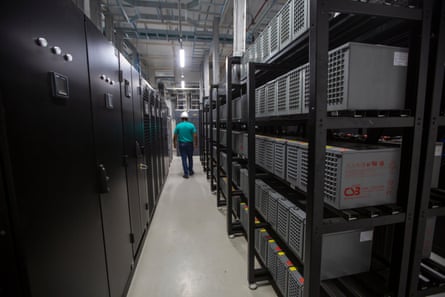
The International Energy Agency conservatively estimates that datacentre energy consumption will double to 945,000 GWh by 2030 – the equivalent of Japan’s annual energy consumption. Emerging countries such as Brazil will account for about 5% of the projected growth over this period.
Water consumption is set to rise significantly, with 4.2bn to 6.6bn cubic metres needed for global AI demand in 2027, according to researchers at the University of California, Riverside, and the University of Texas at Arlington. This is more than half of the UK’s annual water consumption.
However, according to Shaolei Ren, a researcher at UC Riverside and co-author of the article, there is an essential difference between withdrawal (the water taken out of the system) and consumption (water withdrawal that evaporates) regarding datacentres.
after newsletter promotion
“While residential users typically don’t use much of the water they withdraw, datacentres often use 60% to 80% of it,” says Ren. In other words, the water is lost.
Datacentres can be cooled in two ways. One is air conditioning, a power-inefficient solution for extensive facilities. Water is the second option.
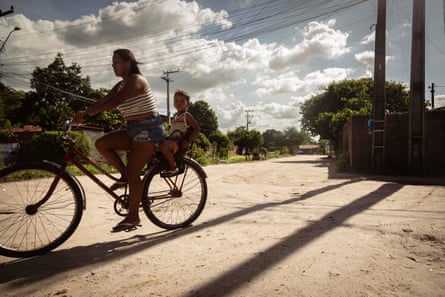
One technique is to use radiators with fans in a closed water circuit, where the water is recycled or reused, similar to the system in a car engine, but costs are high. Another option is cooling towers, which remove heat from hot water using evaporation, so the cold water can be pumped back into the system. The last method involves spraying water into the air to make it more humid and lower the temperature.
But there are still some inefficiencies. “Both evaporation and spraying result in water loss,” says Emilio Francesquini, an associate professor at the Federal University of ABC.
A small datacentre with a 1MW capacity consumes 25.5m litres of water yearly, losing 1% (255,000 litres) via evaporation.
In Pecém, alternatives to water extraction would be seawater desalination or the purchase of recycled water from Fortaleza, says Francisco Assis de Souza Filho, a professor at the Federal University of Ceará.
He says it is up to the state government, as part of the environmental licensing process, to grant a datacentre a water concession.
Ronildo Mastroianni, a technical director at Esplar, an NGO that has worked in Ceará for 50 years, says a project that requires intensive water consumption in a semi-arid region does not make sense. “A small push is all it takes to become arid,” he says.
Mastroianni cautions that these projects could result in permanent watershed changes. He warns of a weakening caatinga – a fragile ecosystem – and growing food insecurity due to water shortages in rural areas. No representatives from local non-governmental organisations or the dozens of quilombola and Indigenous communities were invited to discuss the project, he says.
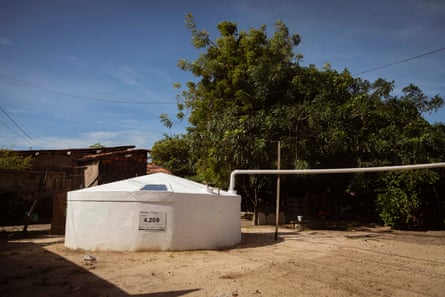
Other Latin American countries have also experienced a datacentre industry boom. Chile has 22 datacentres, 16 located in the greater Santiago area. In December, the government announced a national plan for 30 new projects, as the country is expected to move from a medium to a high level of water stress by 2040, with the likelihood of a decrease in water availability.
In Chile, the government and companies are facing a growing resistance. In 2019, Google announced plans for a second datacentre in Santiago, where the activist organisation Socio-Environmental Community Movement for Land and Water (Mosacat) estimated that the project would extract 7bn litres of water annually.
After a series of demonstrations, a Santiago court reviewed the project. In early 2024, the court halted it pending Google’s review of the environmental impact.
One of those who took part in the fight to stop the project was Tania Rodríguez, a member of Mosacat.
“It’s turned into extractivism,” she said in an interview with Rest of World. “We end up being everybody’s back yard.”
-
This article was written in partnership with The Intercept Brasil and in collaboration with the Pulitzer Center’s AI Accountability Network. Read it in Portuguese here

 3 months ago
222
3 months ago
222















